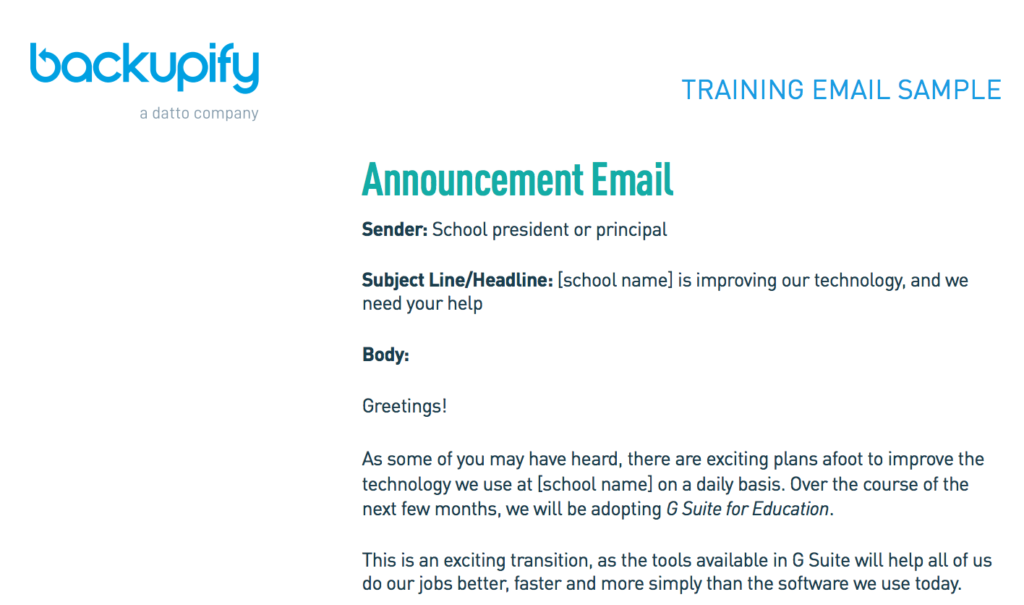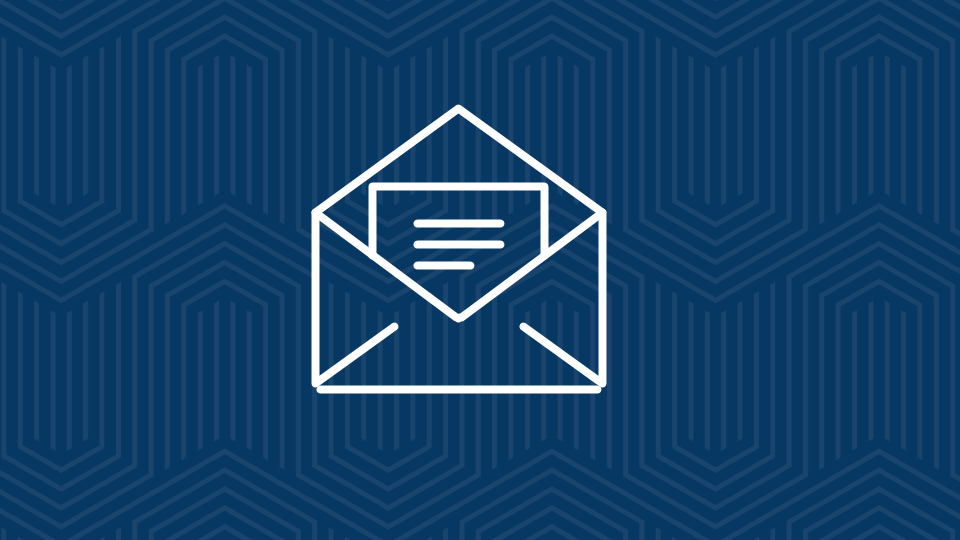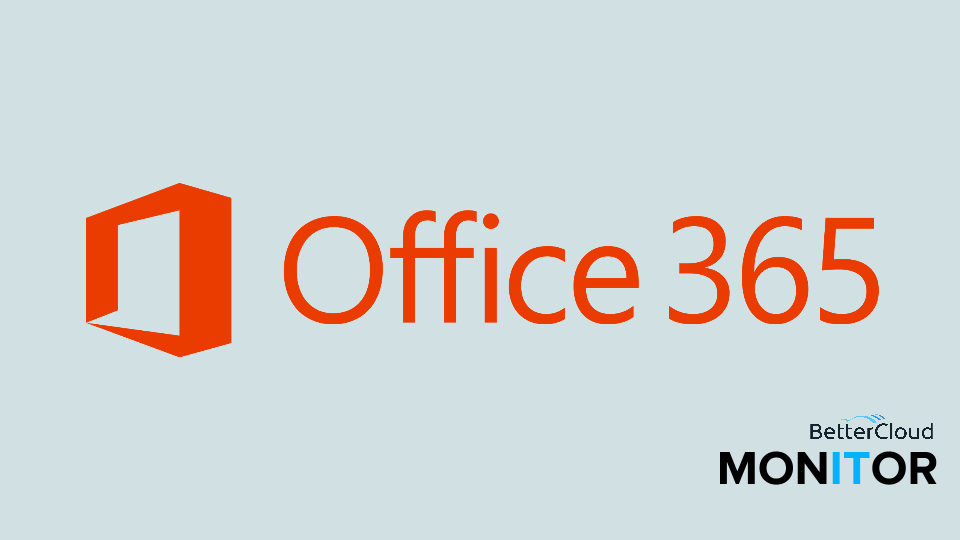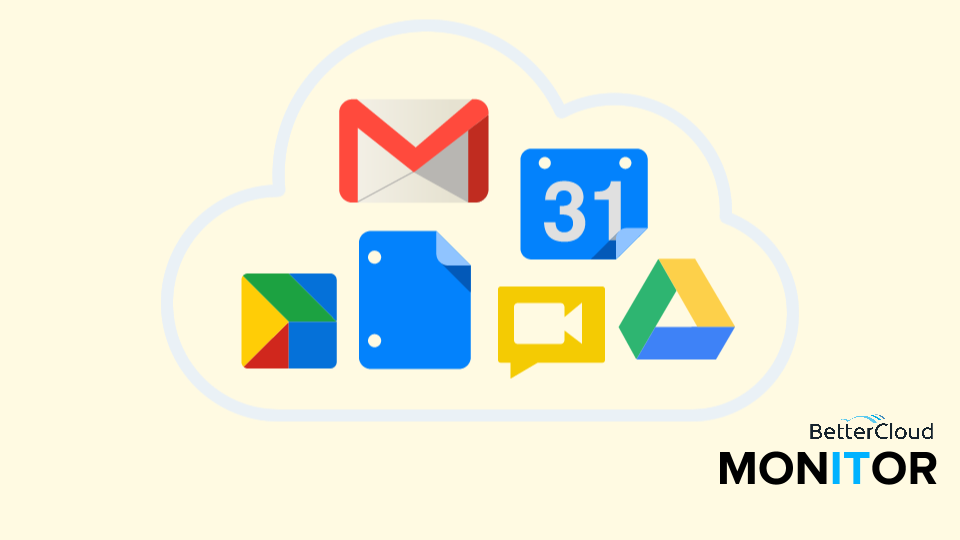Migrating to G Suite for Education: Tips for Success
4 minute read

It’s that time of year again!
Schools are vetting new technologies to make the 2017-2018 school year their best yet. If you fall into this category you may be considering a migration to G Suite (formerly Google Apps). Migrating to cloud applications is no minor task. The process takes time, requires support, and calls for lots of patience. We decided to take it to the people who are all too familiar with this experience: fellow G Suite admins!
Gaining Support is Key
The first piece of advice our G Suite admins shared was around setting the stage for this new technology. People are creatures of habit, and adapting to a change like this can be difficult. Anticipate some pushback from your users, teachers, and students alike.
After you’ve pitched G Suite to your network, take in all of their questions and fears. Be honest about the capabilities G Suite can and cannot offer them. Setting realistic expectations gives way to a transition built on trust. If your users trust that you are doing everything you possibly can to meet their needs, they will support your efforts along the way.
How to Combat Pushback
The best way to handle early pushback is to present a well-formulated plan to your users. Share with them your plans for training sessions, and let them know when changes will be happening to avoid surprise or shock. Let them know you will be demoing G Suite with a few users before rolling it out to them (see “Power users” in the planning section).
Another great way to combat pushback is to present them with real examples that appeal to their everyday activities. For example, office administrators share a great deal of content throughout the day with teachers, peers, outside organizations, etc. Show them Google Forms and let them see how easy it will be going forward to create polls, send surveys, and gather contact information.
Building Support
A great way to garner support is by starting at the top. Your school’s principals and senior educators should be your first stop. Start by teaching them about G Suite. Teach them about G Suite by showing them. Google Drive tends to be the application users love most because of the collaborative capabilities it offers. It has changed the way people work on documents and share files indefinitely. Your peers will love it.
Say you’re pitching G Suite to your principal, vice principals, and administrators. These are the folks responsible for creating and keeping track of your school’s budget. Lots of planning goes into expenditure, fundraising, faculty salary levels, etc. Showing this group Google Sheets will be life-changing for them. Google Sheets will offer them the ability to update data on different tabs at the same time and view changes as they’re happening. Google Sheets will also track changes to help them avoid overwriting data accidentally.
Organizing the Rollout
While we know summer is meant to be vacation, successful migrations happen when a little elbow grease is mixed into those sunny months. If you plan to roll out G Suite to your entire faculty and student body at once, you should consider migrating all emails over during the summer. This way, when the doors open in September, everything is ready for them.
Some admins have also rolled it out to just a few departments at once. By focusing all of the effort on one or two departments, students and teachers had a positive onboarding experience. The feedback spread to other departments, and they were soon asking to jump on the G Suite wagon as well.
Setting the Plan in Motion
A communication plan is also essential for a smooth migration to G Suite. This plan should consist of a series of emails that are delivered over time. Email #1 is, of course, your announcement:

The email above is just a snippet of much longer announcement, but you get the idea!
The emails that follow should cover a number of topics like recruiting power users, switch notifications, tips and tricks, and training invitations. Every communications plan will differ, but the admins we interviewed highly recommend the call for power users.
Power users, also known as Google Guides, will serve as your in-the-trenches ambassadors, advocates, and support system. These people will be hugely helpful to you in the early stages and in the long term as G Suite undergoes updates.
Getting your Google Guides together during the summer is most effective if you can get people on board. Find the technology lovers among your faculty. They will likely chomp at the bit to get their hands on new software ahead of everyone else. When fellow colleagues and students need help getting up to speed in the fall, you’ll have yourself a team of G Suite evangelists who can lend support.
Sharing Successes
No matter how much you notify people, train them, and give them hands-on support, there will always be naysayers. This is why sharing your successes is a must. Take note of how Google Drive has increased student collaboration. Recall how Gmail helped faculty streamline their inbox and get to the important stuff. Shine a light on the ability for faculty and students to access documents anytime, from any device.
Recognizing wins can be as simple as asking your principal or senior colleagues to send out a message describing the success, or offering a reward to G Suite users who have gone above and beyond to use the software. The more you share your success, the less pushback you’ll receive as you continue to grow with G Suite.
Want more tips and email templates for G Suite migration? The following eBook has more expert advice and examples of hurdles you might face during the transition. It also offers 20+ email templates to help administrators streamline their communication plan. Read “The Ultimate G Suite for Education Migration Kit” today.






